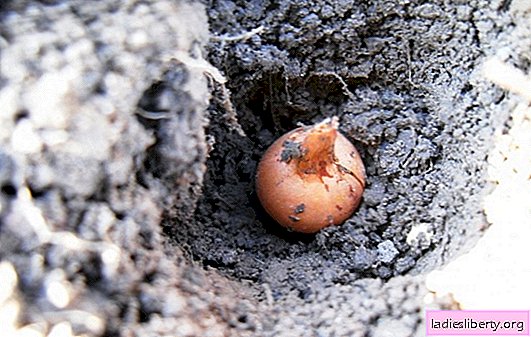
Black or rye bread is one of the best and delicious healthy foods that is good on the table every day. You can buy it or a stove with your own hands, but the beneficial properties will remain unchanged. And so that there is not a drop of harm from brown bread, it is important to know the simple rules for its use.
Brown bread - benefits and composition from ingredients to health-relevant elements
Black is called bread in which rye flour predominates. The smaller ingredient is usually wheat flour, it creates the balance in the dough, necessary for quality and taste. In addition to it, buckwheat, oat, corn and other varieties can be added.
Black breads are infinitely varied - additives include nuts and vegetables (carrots, sun-dried tomatoes, potatoes and more), spicy herbs, grains (for example, sunflower or pumpkin seeds), nuts, spices. And also bran. This bread also varies in terms of the degree of grinding of flour, the technology of preparation of the dough (yeast or sourdough), the dough is simply kneaded or brewed. It also varies in moisture and crumb density.
It is important to note that the so-called gray bread is almost the same as black bread, only rye flour in relation to wheat in gray is slightly less.
No less diverse than the taste and nutritional qualities of black (and gray!) Bread.
But it became known about them not so long ago.
At the beginning of the XX century, such bread in many countries was considered the food of the common people, rough and inferior in all bakery products only from wheat flour.
In fact, even buttery white kalach, even Borodino bread are good and useful in their own way, there should be a place for a variety of pastries on the table.
But, if we talk specifically about brown bread, then there will be approximately such a picture.
Initially, the nutritional characteristics of rye and wheat are similar, but in the process of processing and processing grain, it is rye that retains more useful qualities, even if it is converted into fine flour.
The composition of brown bread contains enough vitamins, but the highest content is E, A, B3 and B1.
Thanks to them, you can eat it with the knowledge that it will serve:
· Prevention of bone and joint diseases;
· Improving heart function;
· Restoration of damaged tissues with minimal scarring;
· Better transport of nutrients to the cells.
There are amino acids in rye bread, for example, lysine, which is not synthesized by man himself, but is literally vital for the absorption of proteins and calcium from food, normal growth and tissue regeneration, and the production of hormones, antibodies, and enzymes.
The mineral complex of rye bread is mainly represented by iron, magnesium and calcium, potassium, and it contains much more of all this than in wheat.
Thus, brown bread is useful for:
· Prevention of anemia - by normalizing the level of hemoglobin;
· Normalization of other blood parameters, including the level of formation of blood cells;
· Improving the condition of the skin, including its elasticity and healthy color without flaws;
· Strengthen vision and enhance the protective functions of the eyes from direct sunlight. The latter is very useful in the summer, when you do not want to hide your face behind sunglasses all season.
How to eat healthy bread
Black bread saturates quite quickly, and not only due to the energy value of 100-200 kcal per 100 g, but also largely due to complex carbohydrates in the amount of 30-45 g per weight. Rye bread is digested for a long time, but does not burden the digestive system at all.
Moreover - unlike pure wheat bread, this variety, when consumed with the same soup, stewed meat or vegetables in sour cream or tomato sauce, does not cause such obvious fermentation processes that are not useful for the digestive tract.
Lightweight digestibility is distinguished by rye bread in the format of crackers, it is usually advised to introduce it into the diet during recovery periods after surgery, serious illnesses.
The average rate of use with the use of brown bread (not in the form of crackers!) For an adult is about 300 g per day, and it is optimal to eat it somewhere at lunchtime, but not in the early morning and not at night, when it is more reasonable to load the body easily digestible food.
When including brown bread in your daily diet, it is very important not to forget to drink enough liquid, since this product not only normalizes the water-salt balance, but also contributes to a better distribution of the fluid entering the body and its quick elimination.
When the benefits of brown bread are most pronounced
Rye bread is stale and molds more slowly than wheat due to special antibacterial properties that positively affect the human body.
It is recommended to eat with infectious diseases of various nature, at a time when the risk of harmful microorganisms entering the body is high, for example, in the summer, when there are a lot of fresh fruits and vegetables on the table, but they are not washed thoroughly.
Brown bread is especially important on the table in the season of colds, acute respiratory viral infections and the like, as it briskly boosts immunity and maintains the tone, the supply of human vitality.
Expressed, by the way, not only on the physical, but also on the psycho-emotional plane.
A slice of rye bread, of course, is not a chocolate candy, but also improves mood.
The regular use of brown bread is also useful in the following areas:
· To alleviate the state of diabetes and prevent disease - rye bread, unlike wheat, does not increase sugar levels;
· For the prevention of digestive disorders, including a decrease in appetite due to nervous system;
· To improve the condition of blood vessels and blood. Brown bread also lowers bad cholesterol.
In the long run, rye bread is able to establish a metabolism, as well as activate the process of splitting fats in the body.
It is known that rye bread is in demand for home beauty recipes, but you can take care of your hair and face, as already emphasized, and simply by including it in your diet.
For lush, strong and shiny curls it is very useful to eat brown bread with vegetable oil or sour cream, yogurt.
What could be the harm from brown bread
Bread from rye flour (of course, adjusted for different varieties) is more acidic in comparison with baking from wheat flour, and they can also increase the acidity of gastric juice, and therefore there can be harm from brown bread during exacerbation of gastritis and gastrointestinal ulcers.
Again, for the health of the digestive system, not only rye, but all bread products are not recommended to be consumed simultaneously with juicy fruits (oranges, cherries, watermelons, plums, etc.), jam, vegetable pickles, fresh milk, legumes and slowly digested side dishes (cereals , pasta, potatoes).
Brown bread, finally, is more difficult to digest than white bread, so in principle they should know the measure, not to eat it a lot on an empty stomach or at night, periodically alternate it on a table with bakery products made from wheat and other types of flour.
Many especially like freshly baked bread, it is warm, soft and tasty smells, but back in the old days, when they didn’t even hear about nutrition, they knew about the dangers of black bread for the stomach - the processes that started when it was being prepared continue in fresh baking.
So yesterday’s bread is the most useful. But within 48 hours from the moment of baking, the bread becomes less and less useful. True, you can always put it on crackers.
Caution should be taken with brown bread for diseases of the liver, gall bladder, and pancreatitis.











